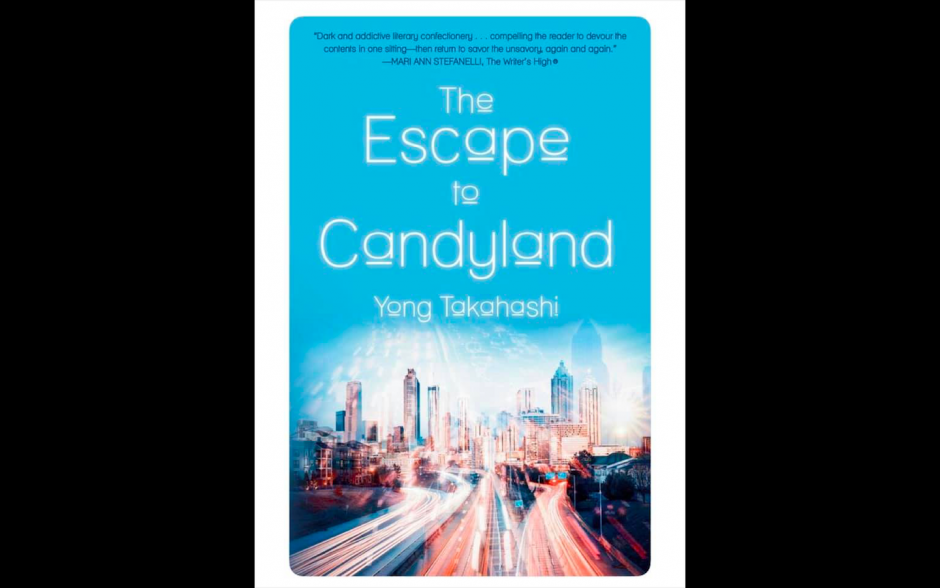In Yong Takahashi’s debut collection of stories, The Escape to Candyland, the main character is dilemma. That’s the featured role in this series of recursive, interwoven stories: the human heart in conflict with itself. Takahashi’s protagonists labor under myth-like predestination and curse; they are often tortured by the knowledge of what ails them, compounded by the inability or unwillingness to overcome it. Hence dilemma. Very few suffer in ignorance – most of the men and women in these stories know they are beset by a personal menace (an abusive husband, guilt over a brother’s death, an obsessive-compulsive mother), and many understand that their deliverance lies in plain sight, but who among them can seize it and afford to lose a pillar of their identity – past trauma. Perhaps, then, the apt word to describe each member of Takahashi’s diverse cast is personage; a word that sounds uncannily like Takahashi’s core premise: person + baggage.
And if the protagonist is dilemma, the central antagonist might be the figure of the mother. Mothers do not fare well in this collection – all the anguish and entanglement felt by the younger generation of characters is frequently traced back to mothers, either imperious mothers or indifferent mothers (both are equally destructive, Takahashi shows). Even from beyond the grave, mothers wield a deranging influence on their children; their torment is so great and lasting it seems genetically passed down.
Set in and around contemporary Atlanta, the collection shows an amalgam of individuals bristling under these various personal crises and the precarity of their own American Dream. Their lives intersect in myriad ways and it’s a pleasure to watch Takahashi build her individuals into a networked community, one where connections and influences crop up in all sorts of subtle, unexpected ways. The hero in one story can become the villain in another; the savior turns sufferer; no one ever really knows when Fortune’s wheel will spin back around and pin them. As one young girl on trial for murder puts it, “Each of us has secrets. We’ve lived our lives like compressed balls of yarn, twisted and knotted together, unable to separate ourselves from each other. Once I let my secret go, all the others will unravel. We will all be brought forth to be judged.”
What becomes so tantalizing and affecting for the reader is how these crises and dilemmas seem surmountable when viewed from the outside, yet few of Takahashi’s characters are ever able to make that one deft move that will pull them out of their own crucibles. Suddenly the reader wonders: am I trapped in an invisible plight? Some may suspect the answer is: Yes. How often do we comprehend our external tormentors and inner demons, and how often are we unable to lift a finger against them? The result of each successive story, then, is a thrilling claustrophobia – the reader and characters are continually boxed in and desperate for grace, but the avenues of escape remain stubbornly hidden.
This is not to say that the stories leave us without hope. Early in the collection, in the titular story “The Escape to Candyland,” and throughout in stories like “Clean Slate,” “Job Search,” and “Change,” Takahashi hints at where salvation lies. The reader must take up the collection and find out.
***
The Escape to Candyland is published SFK Pres.
Follow Yong Takahashi on Twitter: @yctwriter
Follow Michael Piekny on Twitter: @hub_edits
For more book reviews, check out our blog.


